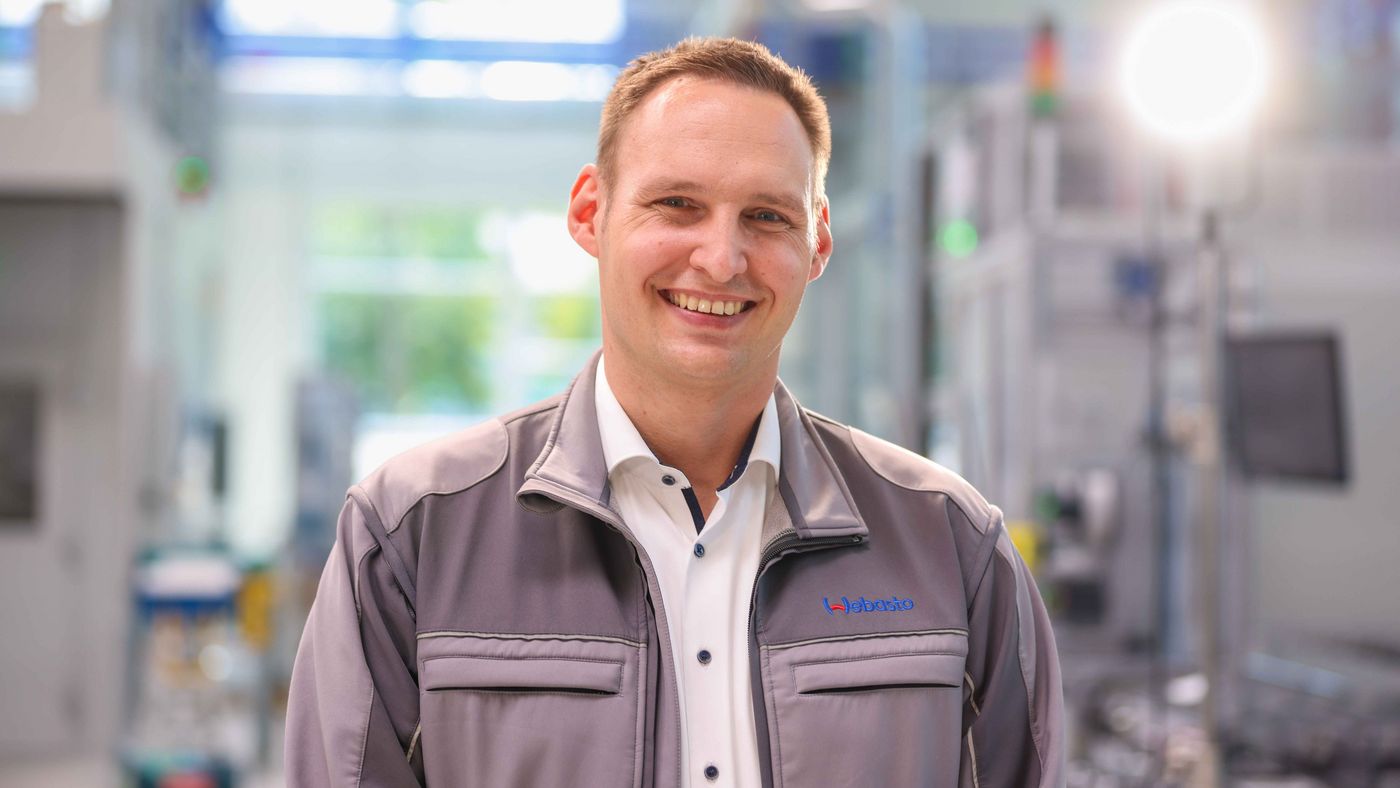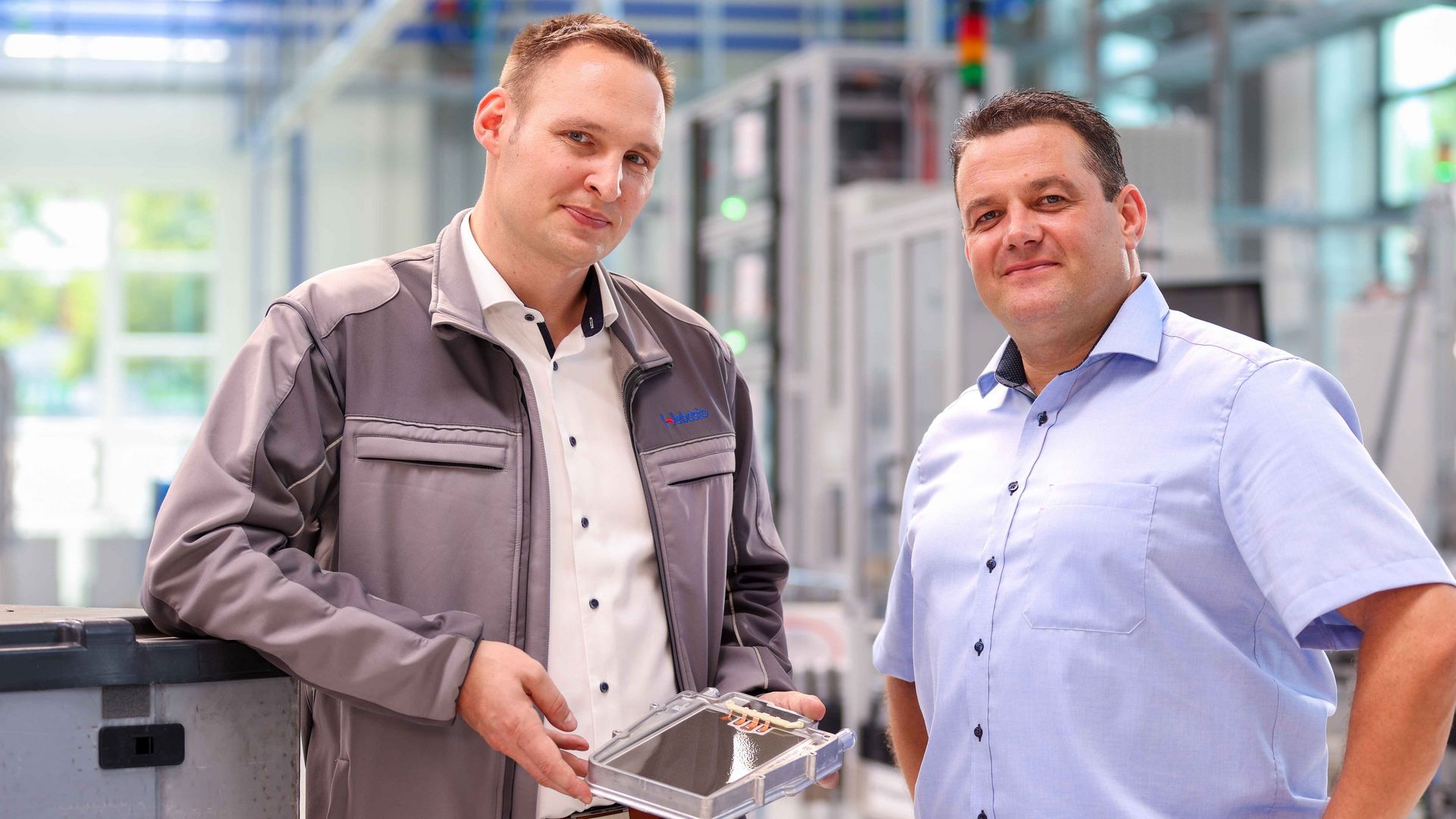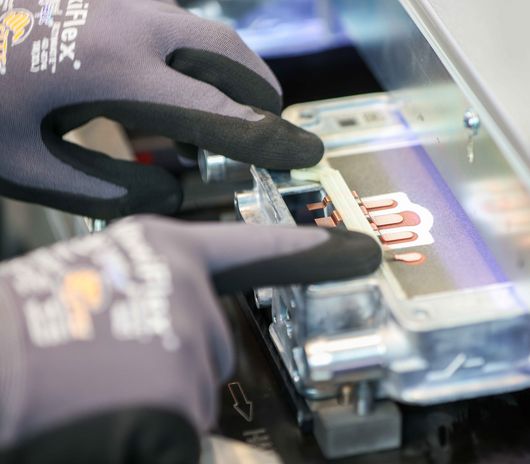The electric car with the perfect temperature
The German manufacturer Webasto produces and distributes components for the automotive industry at over 50 sites worldwide. At the Neubrandenburg site, everything revolves around heating. In electric cars, this only works via a heat exchanger, which does more than keep the passenger compartment cozy and warm. It also keeps the battery at a constant, ideal operating temperature. As with all other components, the more compact and lighter the heating system, the better. On this basis Webasto has developed its high-voltage heater, which is the thinnest heater on the market thanks to its thin-film technology. Jörn Schmalenberg is responsible for the manufacturing engineering of the electric heaters at the Neubrandenburg site: "We have an extremely short reaction time to get the heat into the water because of the close proximity to the components that carry the cooling water. Thanks to the special design, the heat output can also be regulated almost continuously - both at 400 volts and 800 volts. No one before us had been able to achieve this." Webasto relies on three high-end laser applications from TRUMPF for production.
Three challenges
Gas-tight welding: The heater for electric cars conducts fluid through heating lines. "Clearly, liquid and high voltage don't mix well in an electric car," says Schmalenberg, "so the aluminum housing has to be welded absolutely gas-tight." However, making aluminum gas-tight is not an easy task. Electron beam welding in a vacuum is too slow and expensive for the mass production of electric cars. However, fast laser welding often results in gas pockets that impair the tightness.
Precise contact for copper: In order for the current to flow properly in the heater, copper is required, which must of course be contacted by welding. Copper is reflective and therefore not an easy mating part for lasers. However, deep weld seams are a danger for the underlying layers. "For this reason we need the ability to precisely regulate the welding depth of the laser. It wouldn't work with the classic infrared laser," explains Schmalenberg.
Structuring conductive paths: In order to keep the heater as thin as possible, Webasto does not want to attach the conductors, but rather insert them directly into the thin metal layer on the surface. "When structuring, we want clean ablation and precise edges. To avoid the risk of product defects, there must be no melting of the material," says Schmalenberg.
Three solutions
Gas-tight welding: Webasto relies on a fast and powerful disk laser that works under atmospheric pressure without shielding gas. Schmalenberg says: "High laser power ensures a stable keyhole. The principle here is that more is better. Gas pockets don't even have time to form.“
Precise contact for copper: The green laser light from the TruDisk Pulse 421 has a high degree of absorption in copper. Schmalenberg is delighted: "With the right pulse sequence, welding depths can be achieved with extreme repeatability - spatter-free and without any shielding gas" and adds: "We haven't had a single defect with several million components yet, and everything runs much more smoothly overall. When it comes to copper welding, we no longer use anything else. We rely exclusively on green, pulsed systems
Structuring conductive paths: Webasto uses a TruMicro ultrashort pulse laser to structure the conductive paths directly into the metal. "This involves maximum precision when structuring the material so that the laser does not penetrate too deeply into the layers underneath. The ultrashort pulse lasers transform the material directly from a solid to a gaseous state, making the desired flat product design possible in the first place," explains Schmalenberg.
Implementation: Three times the power
"It is important for us to launch our new developments on the market as quickly as possible," says Schmalenberg. "That's why we are very happy that we can test the lasers from TRUMPF right away." The good partnership with the research institutes is also a factor. This enables Webasto to keep its products and production process at a consistently high level. "For this reason, in many cases only TRUMPF lasers come into question."
Forecast
As a company manufacturing in the high-wage country of Germany, Webasto requires a high degree of automation with the most economical production technologies such as lasers. A high degree of innovation is also needed, for example through new laser technologies. This makes Webasto a highly coveted supplier worldwide. "You can be sure that almost none of the electric cars produced worldwide will roll off the production line without first-class electrical engineering components from European manufacturers like us."
Find out more about our products
Last updated: 2023-12-13











